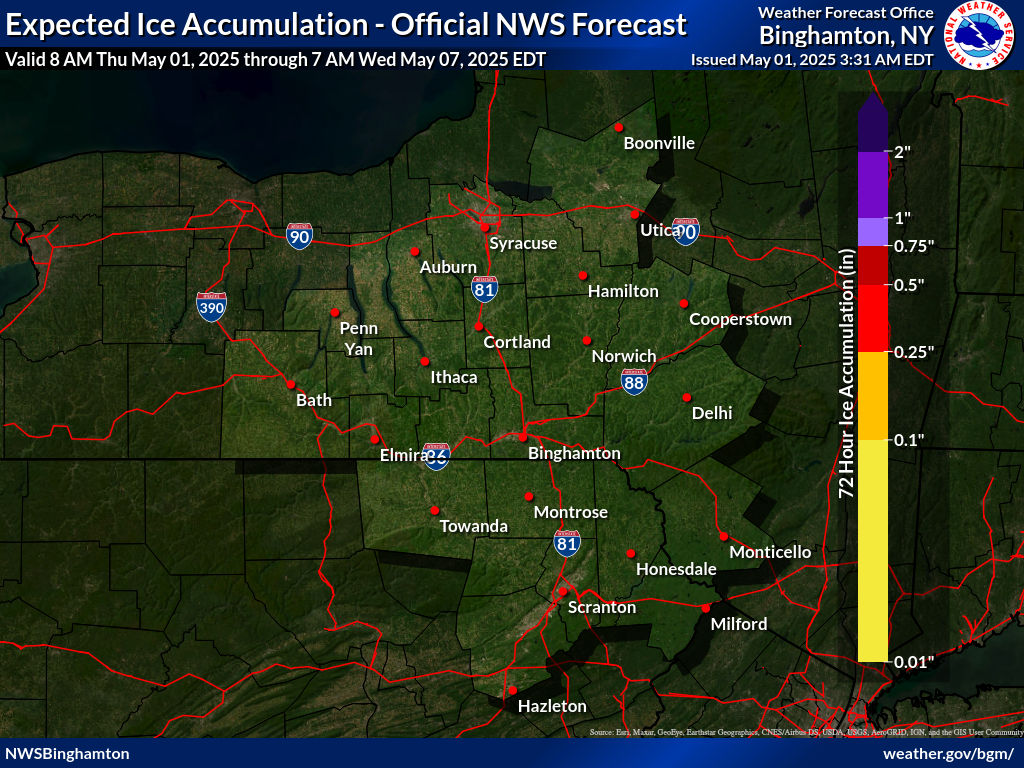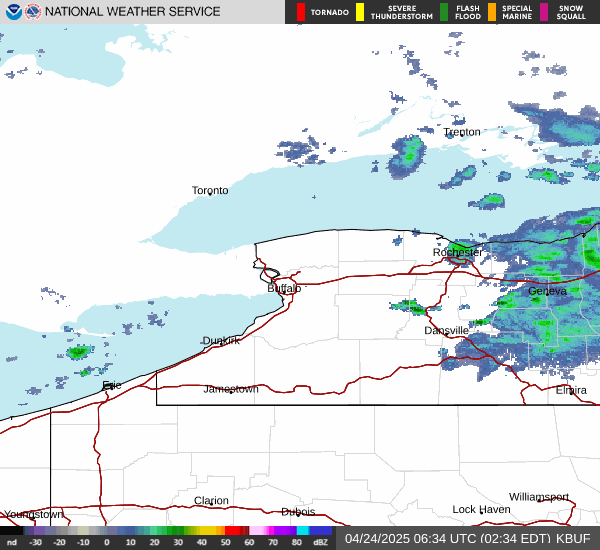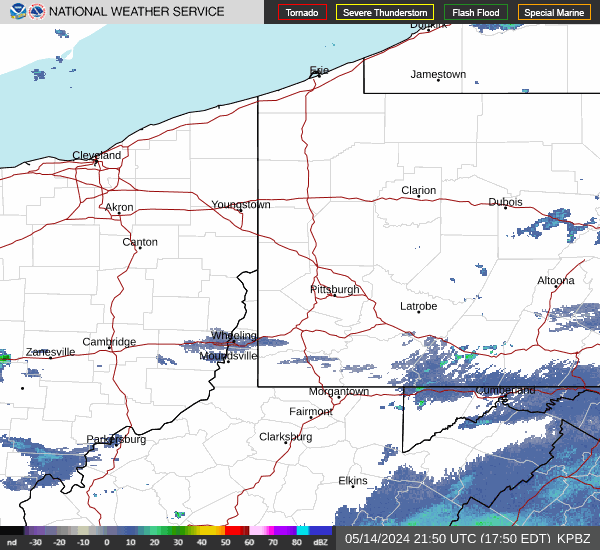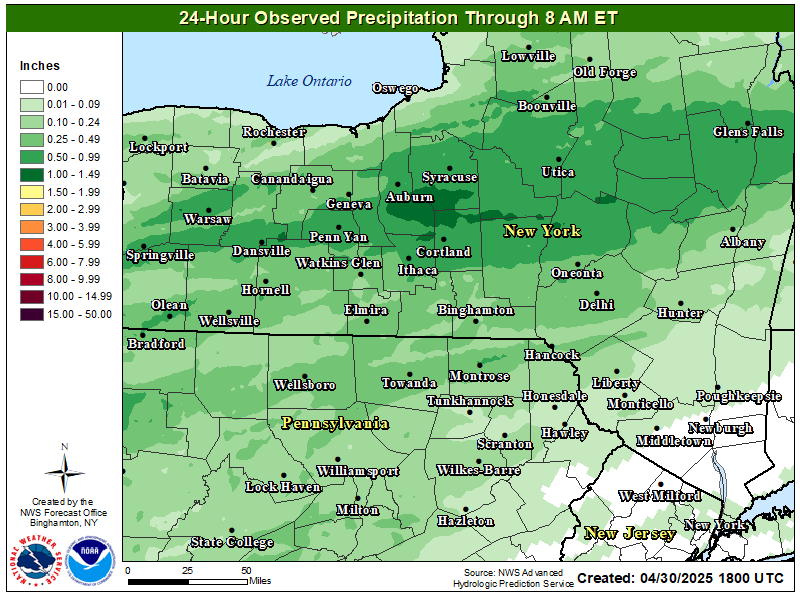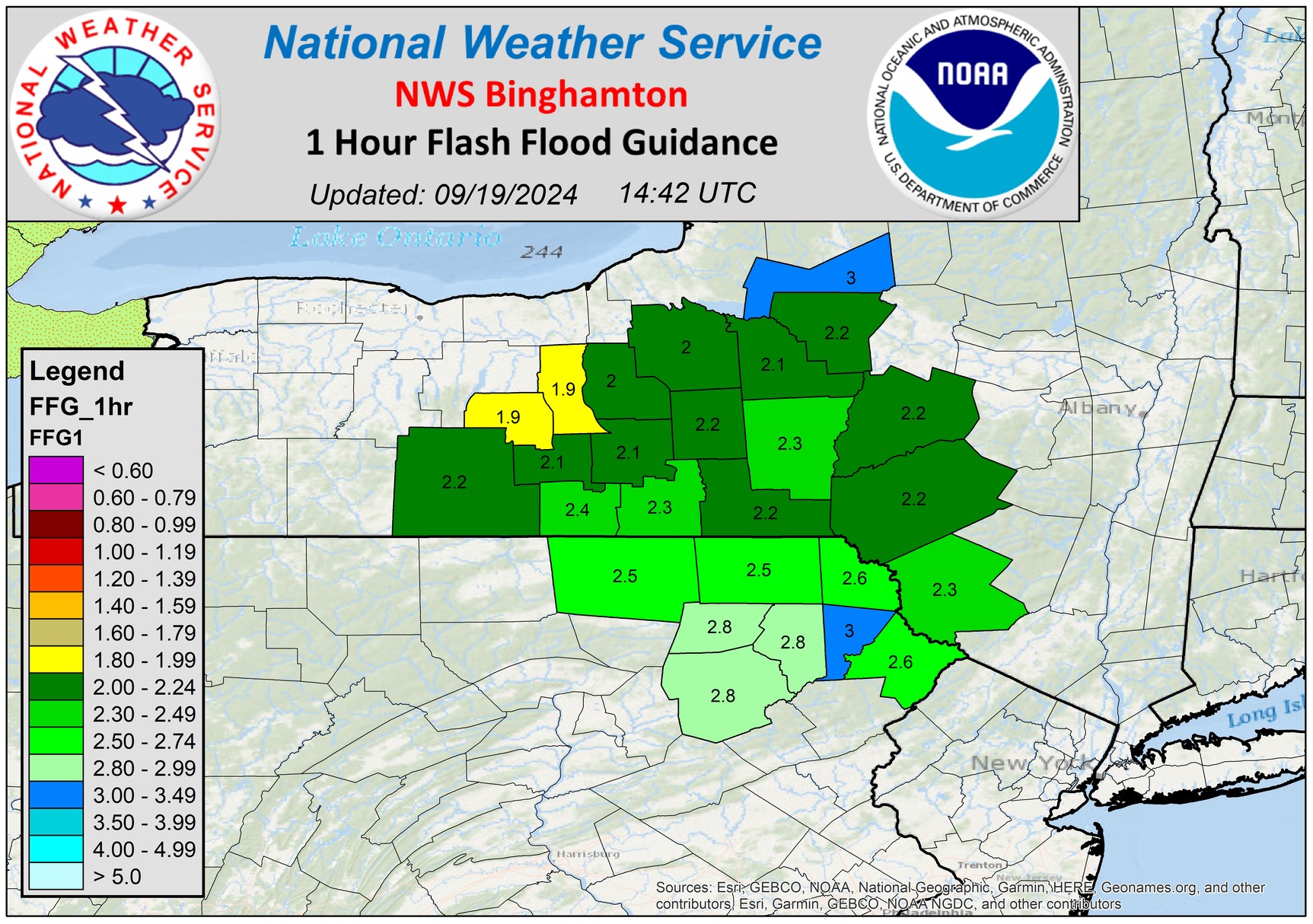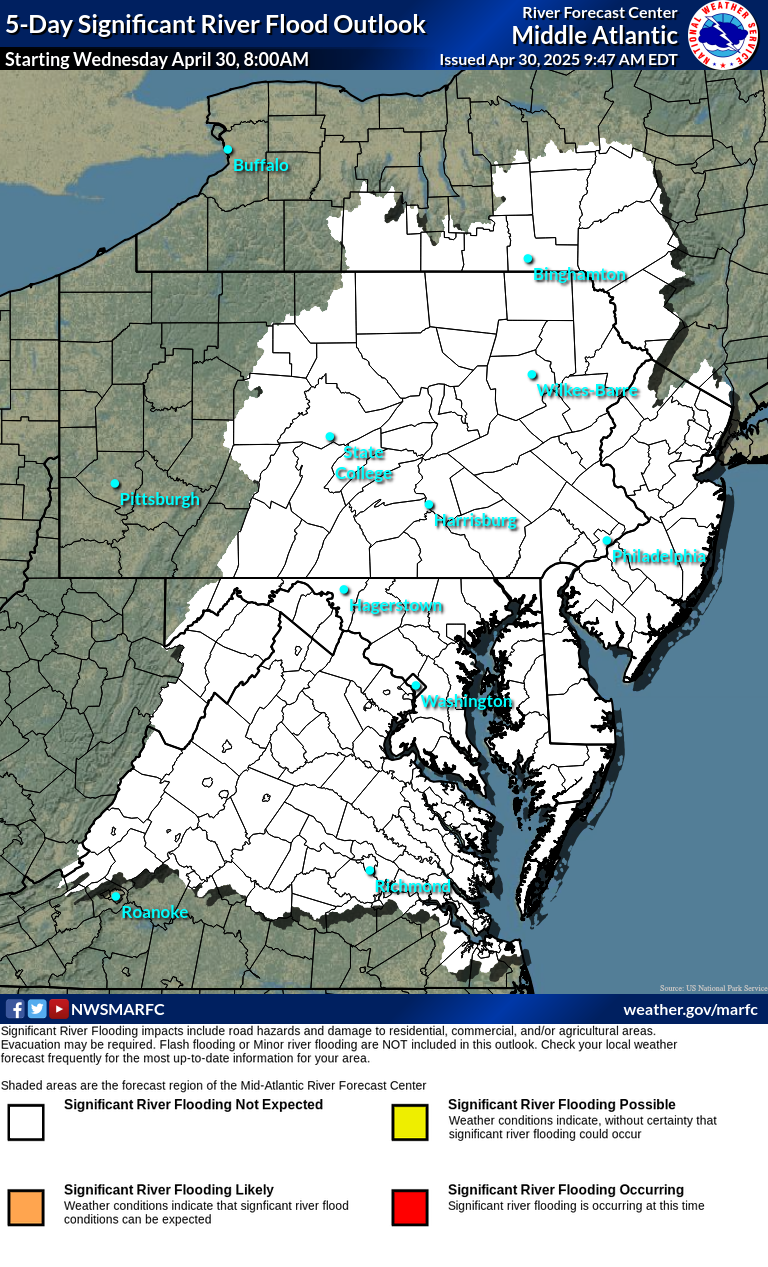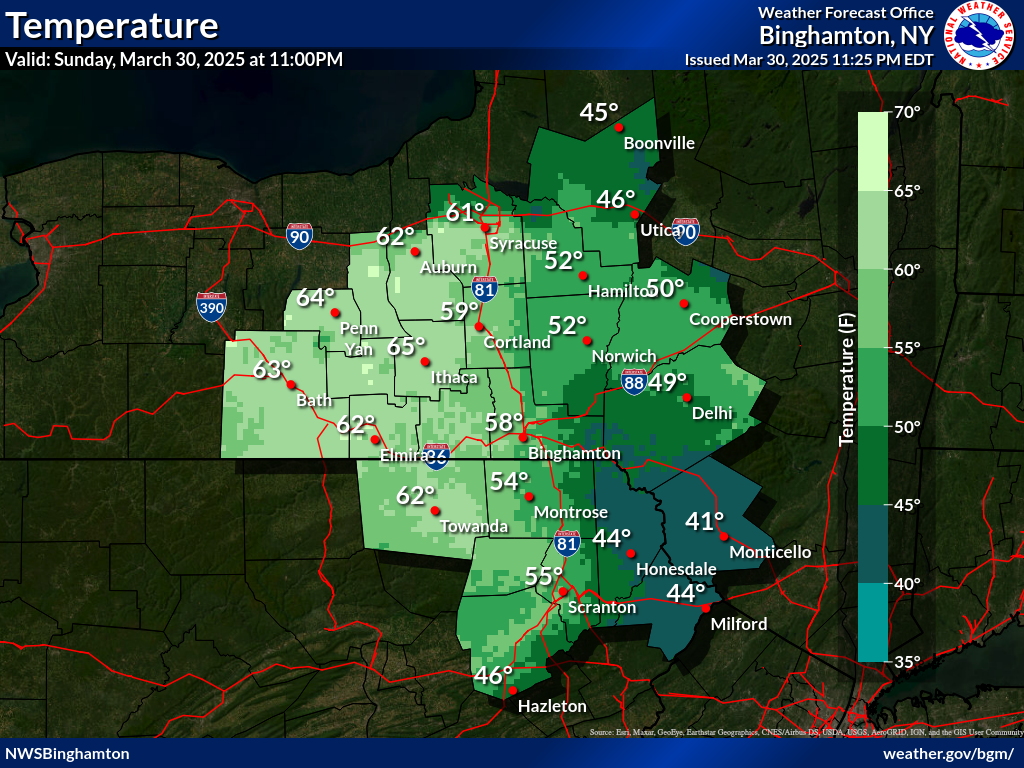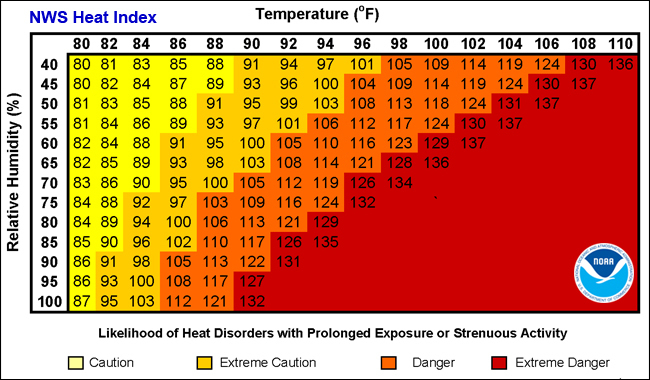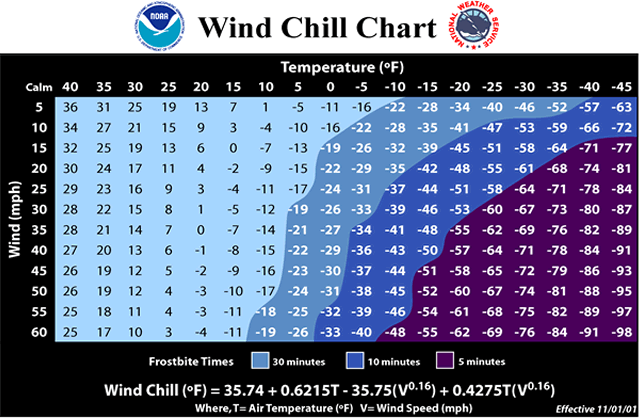Briefing File List (Newest First)
- No Briefings Issued.
When a briefing is available, please make sure to check the creation times listed above.
Additional Information
NWS Binghamton weather forecasts, briefings and warnings are for the area show on the map below, this includes 17 counties in New York and 7 counties in Pennsylvania. This includes the cities of Elmira,Ithaca, Rome,Syracuse, Utica, and Scranton and Wilkes-Barre, to name a few.
| NWS Binghamton County Warning Area (CWA) | |
|---|---|
|
NWS Binghamton CWA with some cities shown. Click for a larger view. |
NWS Binghamton with county labels. Click for a larger view. |







